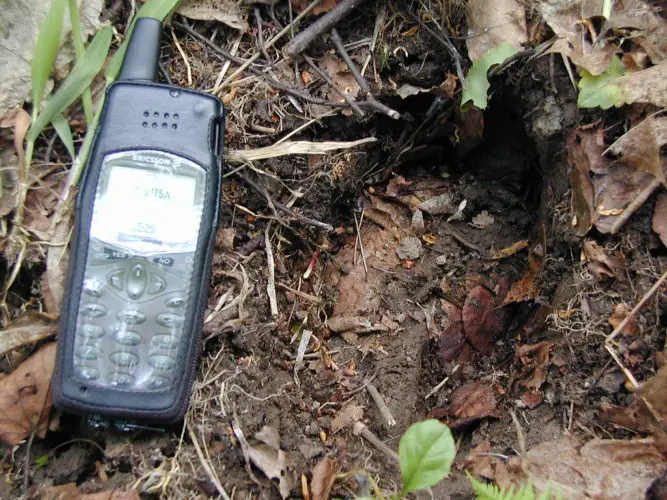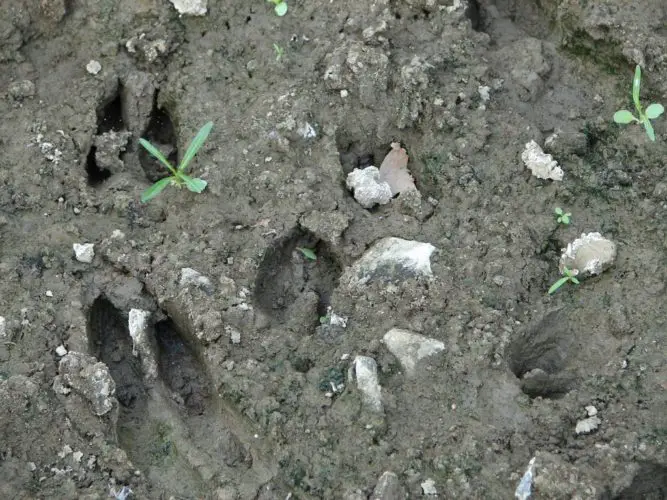Fact-checked by Maren McReynolds, Content Marketing Director of Black Mountain Outfitters .
.
If you want to hunt for an elk or a deer, you need to distinguish the tracks between the two. This guide will teach you to identify elk tracks and distinguish them from deer tracks. Read more below, and you will be armed with the right intel that increases your chance of snagging your preferred prey.
The main difference between elk and deer tracks is in their sharpness. Elks have rounder toes, so their tracks are rounder compared to that of the deer. Another feature is that elk tracks do not sharply taper at the tips.

These are the main differences between these two fine animals. However, do know that all elks are deer, but not all deer are elks. After all, they belong to the Cervidae family and the moose.
For this reason, you need to know other differences between them to increase your chances of finding your preferred animal. That way, you can go home successfully from a fulfilling elk hunt.
In this post, we'll cover:
How to Identify Elk Tracks?

Usually, four inches long, tracks from these majestic animals are larger than most deer tracks. Elks are the largest terrestrial mammals in the North American area but are also found in Central and East Asia.
These majestic wood animals dominate over the other members of the Cervidae/deer family in terms of size, as they can weigh up to 1000 pounds. This means their tracks tend to bury deeper into the ground, especially in snow or mud. This is also because their hooves are hollowed out or rounded inward.
Elks have dewclaws, two on each foot, that may appear on their tracks if they are galloping or running. Their tracks have the tendency to show a full hoofprint and even leave a dewclaw mark sometimes because of how heavy they are.
Elk tracks are noticeably rounder because of their curved toes with tips that do not sharply taper. They have two toes that point forward while the other two point to the side.
These terrestrial mammals travel at one and a half to three feet. They also travel in groups, so it is rare to find tracks left by only one elk.
Another detail that is noticeable about elk tracks is that their widest point is usually on the lower part from the center. The spacing of the toes is a good indication that the track is indeed made by an elk.
There is a high chance that tracks are from an elk if the toes are closer at the back. That is because other animals, the deer included, mostly have evenly spaced toes.
How to Identify Deer Tracks?

Deer are quite common to the point that their overpopulation has become a growing problem. That is why their tracks are the most common ones that hunters can find in the wild.
Deer tracks can measure up to four inches long and three inches wide, smaller than that of the elk. Tracks made by a deer are sharper and become more narrow at the tips.
Their tracks will usually reveal four toes, but it is also possible for them not to leave a dewclaw mark at all. The dewclaw is also an indicator, although not reliable, to tell if the deer that made the track is a buck or a doe.
Both have dew claws, but the buck follows the doe with its head down. This can make the front body of the buck to be heavier, thus leaving a deeper track with a dewclaw imprint.
Deer tracks seem to have a heart-shaped appearance, with the back having two distinct curves that both lead to a sharper front.
Strides of a deer go to about two or three feet. Since they are lighter than elks and their footfalls are more delicate, their tracks look gentler and soft.
Deer tracks stand out more in the wild because other animals in the same habitat as the deer have softer pads on their feet.
What are the Differences Between Elk Tracks and Deer Tracks?
Elks and deers share many similarities because they belong to the same deer family. This means their tracks are bound to be identical. Luckily, there are key features that you can look out for to determine if a track is made by an elk or a deer.
Elks are the largest terrestrial mammals in the deer family, so elk tracks tend to be bigger than deer imprints. The average elk track measures four inches long. This length is probably the largest that a deer track can possibly get.
Because of the elk’s size, their tracks tend to bury deeper than the deer’s. Another reason is that elk hooves are concave, thus digging buried into the ground.
Both species have dew claws, but elks tend to leave them when running or galloping. Deers run and gallop more gently, so there is a lower chance of leaving a dewclaw imprint on the ground.
Elks have rounder toes, while deer toes tend to taper at the tips sharply. The tracks of the larger animal have a more tooth-like appearance, while the smaller one tends to look like a heart. Despite the sharpness of the edges, the deer leave softer tracks because they are smaller in terms of weight and size.
Stride distance for these two species from the deer family also differs, with the elk being able to make twice the stride length of the deer.
Other Tracks That May Look Like Elk or Deer Tracks
It is important to include tracks from other animals that may look like elk or deer. That way, you will not waste time following the wrong animal. This is especially true if you do not yet have enough elk hunting experience.
Fresh bear tracks have the tendency to look like elk or deer imprints. The difference is that their tracks are larger, but this might still look like something that an elk left.
To ensure you are following an elk and not a bear, look for scratches on the ground or within the vicinity of the tracks. If you see claw scratches, the tracks are most likely left behind by a bear.
Another animal track that may look like that of a deer or elk is coyote tracks. Tracks from canines are narrower and smaller, meaning they might look like deer tracks.
However, they have two front and one back toe, so look out if a track has three toes on each foot. If this is the case, then the track is highly made by a coyote.

Maren McReynolds is the Content Marketing Director of Black Mountain Outfitters , a company that offers world-class guided hunts in New Mexico, Arizona, and South Dakota. When not working, she spends time swimming with her two kids and giving back to the community.
, a company that offers world-class guided hunts in New Mexico, Arizona, and South Dakota. When not working, she spends time swimming with her two kids and giving back to the community.
Sources
- https://www.bmohunts.com/hunt/arizona-archery-elk-hunts/

- https://worlddeer.org/deer-tracks/

- https://www.wikihow.com/Spot-Deer-Tracks

- “Elk footprint
 ” by Bushman. K
” by Bushman. K is licensed under CC BY-NC-ND 2.0
is licensed under CC BY-NC-ND 2.0 .
.
